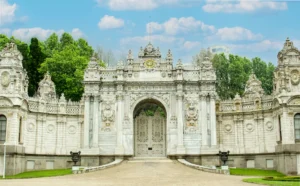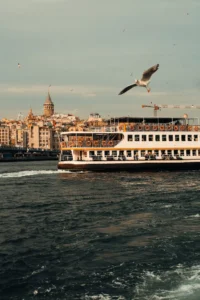If you are planning to visit Istanbul, then the Basilica Cistern should definitely be on your bucket list. This ancient underground marvel dates back to the 6th century and has been a significant part of Istanbul’s history. The Basilica Cistern is a unique and fascinating structure that has captured the imagination of visitors for centuries. In this article, we will explore the historical significance, architecture, and design of this underground marvel, interesting facts and legends about the Basilica Cistern, practical information for visitors, and nearby attractions and experiences in Istanbul.

Why the Basilica Cistern should be on your Istanbul bucket list
The Basilica Cistern is one of the most impressive and unique historical sites in Istanbul. As one of the largest ancient cisterns in Istanbul, the Basilica Cistern has a rich history that dates back to the Byzantine Empire. They constructed the cistern in the 6th century to store water for the Great Palace of Constantinople and other buildings in the city. Today, the Basilica Cistern is a popular tourist attraction, attracting visitors from all over the world.
Historical significance of the Basilica Cistern briefly explained
The Basilica Cistern weaves a rich history with Istanbul’s own. Emperor Justinian I commissioned its construction in the 6th century, as it served as a vital water source for the Great Palace of Constantinople and various city structures. After centuries of use under the Ottoman Empire, the cistern fell into oblivion until a 16th-century rediscovery. Through subsequent restoration and renovation efforts, it transformed into a beloved tourist hotspot.
Architecture and design of the Basilica Cistern
During the Byzantine Empire, builders constructed the remarkable Basilica Cistern, an awe-inspiring underground chamber supported by a total of 336 marble columns, each standing at a majestic height of 9 meters. These columns are meticulously arranged in 12 rows, with each row boasting 28 columns. The cistern spans an impressive length of 140 meters and a width of 70 meters, providing an enormous capacity of 80,000 cubic meters to hold water.
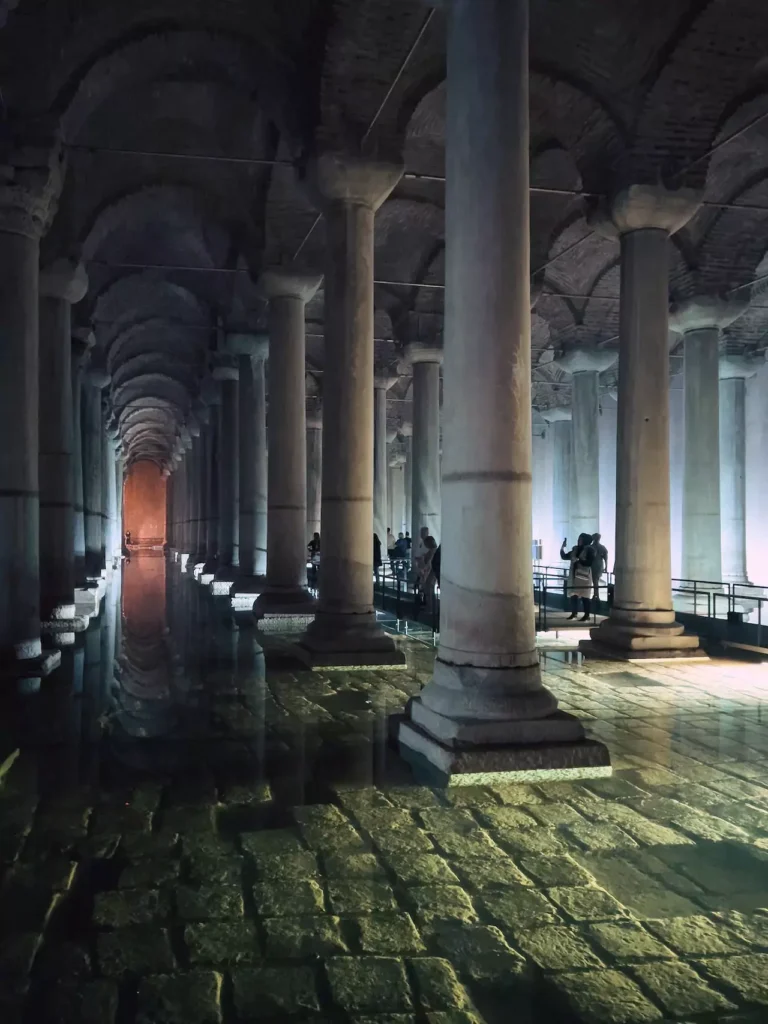
Exploring the underground marvel – What to expect
When you step into the Basilica Cistern, it transports you to a different world. The cistern envelops you in darkness and sends the eerie echo of dripping water resounding throughout the chamber. Dim lights cast an eerie glow over the cistern, intensifying the otherworldly atmosphere. As you stroll along the walkways, the colossal and beautiful columns that support the cistern captivate your senses. You’ll also encounter two Medusa heads, which serve as the bases for two of the columns, believed to ward off evil spirits.


Interesting facts and legends about the Basilica Cistern
The Basilica Cistern has been the subject of many legends and myths over the years. One of the most popular legends claims that slaves constructed the cistern while toiling in dark, damp conditions. Another legend asserts that the Medusa heads were strategically positioned in the cistern to maintain water purity. Additionally, some individuals contend that the cistern served as a clandestine refuge during the Ottoman Empire.
History of the Basilica Cistern
The Basilica Cistern, also known as the Yerebatan Sarayı or Sunken Palace, is an impressive part of Istanbul’s history. Constructed during the rule of Eastern Roman Emperor Justinian I in the 6th century, this colossal underground reservoir has a rich heritage. It features a stunning display of marble columns emerging from its waters, making it a sight to behold.
Covering an area of 10,000 square meters, the Basilica Cistern is the largest covered cistern in Istanbul. It has a storage capacity of 80,000 tons. The main purpose was to provide water to the Great Palace and other structures in the city, sustaining Istanbul for generations. Supplied by the historic Hadrianus Aqueduct, the cistern boasts an incredible 336 columns arranged in 12 rows. These columns, measuring 9 meters in height, showcase various styles, including Corinthian and plain designs.
After the conquest of Istanbul in 1453, the cistern served the Topkapı Palace for a period before eventually becoming accessible to the public as urbanization progressed. In the 16th century, the French naturalist Petrus Gyllius “rediscovered” this hidden gem and documented its dimensions and column count, ensuring its preservation for future generations.

The Basilica Cistern in modern times
Throughout the Ottoman era, the cistern underwent several restorations, with the most extensive one taking place between 1985 and 1987 under the Istanbul Metropolitan Municipality. This restoration revealed the iconic Medusa heads used as column bases, which have since become a major attraction and the subject of legends. Since its restoration, the Yerebatan Cistern has served as a museum, hosting both national and international events.
Over the years, the cistern has welcomed esteemed guests such as Bill Clinton, Wim Kok, Lamberto Dini, Göran Persson, and Thomas Klestil. Following its most recent extensive restoration in 2022, the Yerebatan Cistern Museum continues to thrive, aiming to shape the future of art and culture in Istanbul.


Tickets and entrance price for the Basilica Cistern
Explore the breathtaking Basilica Cistern, an enchanting piece of Istanbul’s past, with a ticket in hand. It’s important to note that the Museum Pass won’t grant you access here. Depending on your visit’s timing, you’ll find different pricing options. From 09:00 to 18:30, local visitors can enter for 80 TL, while foreign guests will be charged 450 TL. If you choose to venture into this subterranean wonder between 19:30 and 22:00, the prices change a bit. Local visitors are charged 250 TL, foreign visitors pay 1,000 TL. Feel free to grab your tickets at the entrance or opt for the ultimate convenience of securing them online through Passo. You can buy your ticket here. Please note that only day-time tickets can be bought online. Yo have to buy tickets for the night shift at the entrance of the museum.


Opening hours and peak times to visit the Basilica Cistern
The Basilica Cistern welcomes visitors daily from 09:00 to 19:00, except for the first day of religious holidays. Your ticket is valid from 09:00 to 18:30. If you’re up for the unique “Night Shift” experience, you can grab your ticket at the event counter by the museum’s entrance; these sessions take place from 19:30 to 22:00.
The night shift and surprise concerts
The Basilica Cistern isn’t just a historic site but also a gateway to culture and art. Through Night Shift events, it continues to blend history and art. During Night Shift, surprise concerts take place on specific days of the week between 19:30 and 22:00. Everyone looking to experience the magic of history can embark on a mystical journey and might stumble upon a surprise concert within the unique atmosphere of the Basilica Cistern, offering a captivating harmony of history and art. You can find up-to-date event details here.
Tips for a memorable visit to the Basilica Cistern
If you want to have a memorable visit to the Basilica Cistern, there are a few things that you should keep in mind. First, it is best to wear comfortable shoes, as there are many stairs to climb. Second, it is best to arrive early in the morning or late in the afternoon, as the cistern can get busy during peak times. Third, it is best to bring a camera, as there are many photo opportunities in the cistern.
Nearby attractions and experiences in Istanbul
There are many other attractions and experiences in Istanbul that are worth visiting. Some of the most popular attractions include the Hagia Sophia, the Blue Mosque, the Topkapi Palace, and the Grand Bazaar. You can also take a Bosphorus cruise or visit the Spice Bazaar.
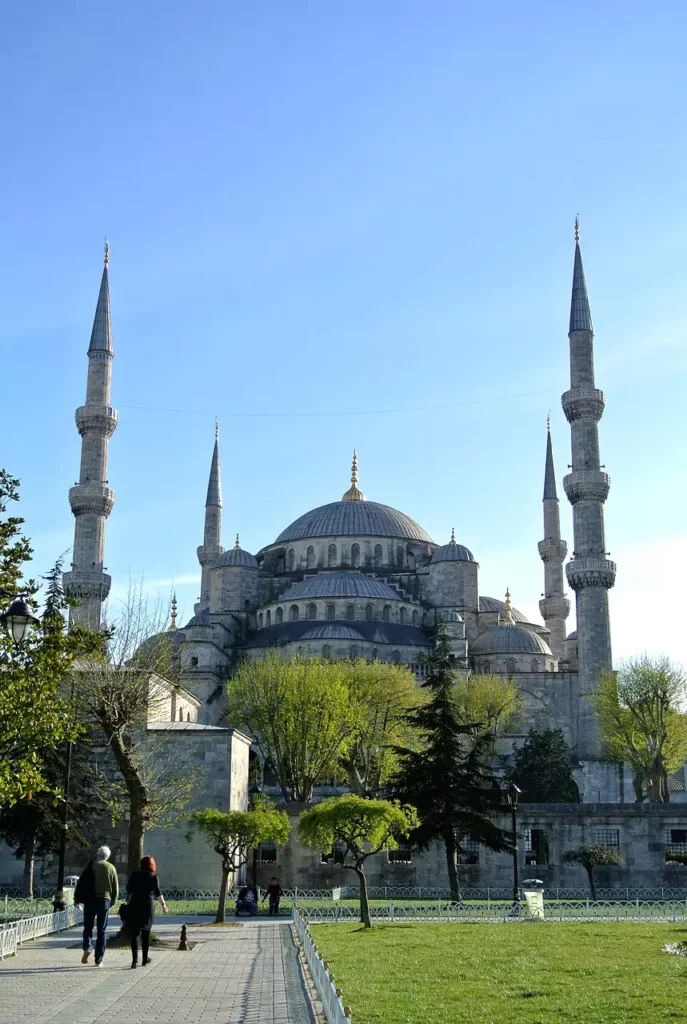


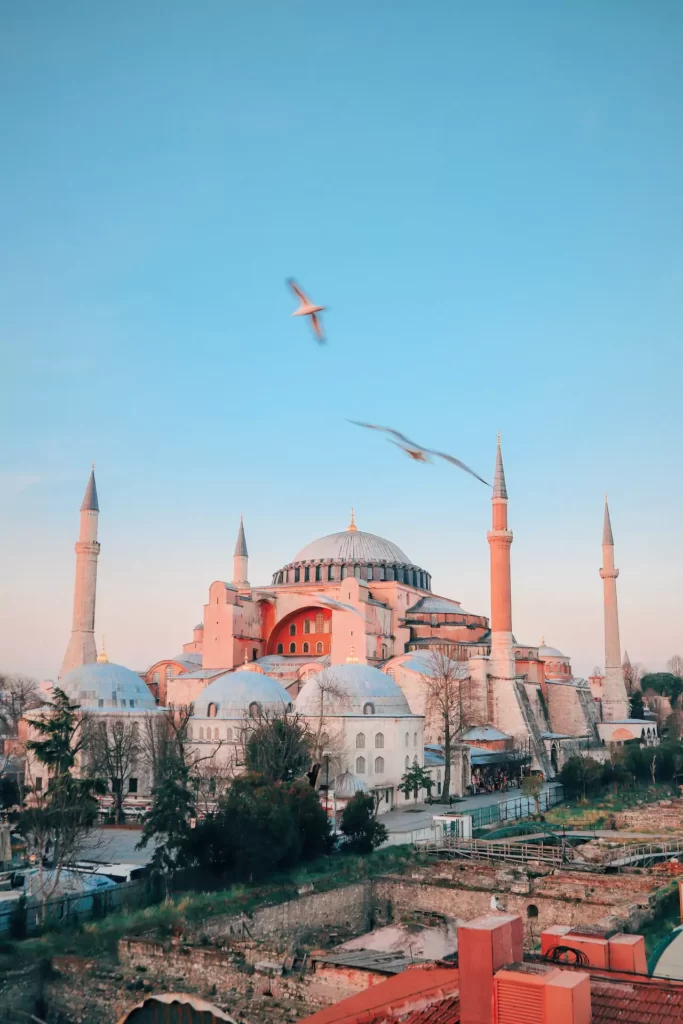
Conclusion: The enduring significance of the Basilica Cistern
The Basilica Cistern is a unique and fascinating structure that has captured the imagination of visitors for centuries. The cistern has a rich history that is intertwined with the history of Istanbul. The cistern has been restored and renovated over the years and has become a popular tourist attraction. If you are planning to visit Istanbul, the Basilica Cistern should definitely be on your bucket list.

